Like most women that I know, weight and body image is often on my mind, and has been for years. I lost weight in college doing a low carb diet. I tried again after the birth of our second son and it was simply impossible. My husband lost weight but I was cranky, shaky, and miserable. I could not enjoy our two sons because of how horrible I felt. I lost 20 pounds after our third son was born with the PiYo diet and exercise, which worked well for me simply because I have to have specific guidelines and portion sizes. What has worked for so many people is intermittent fasting. (Note: I am not a doctor and I have no medical training, so please consult your doctor if you are wanting to start any weight loss plans.) It encourages me to get to bed to get the sleep I need and avoid late night snacking, and also to think about meals and eating rather than just eating because it's "mealtime."
Guide to Intermittent Fasting
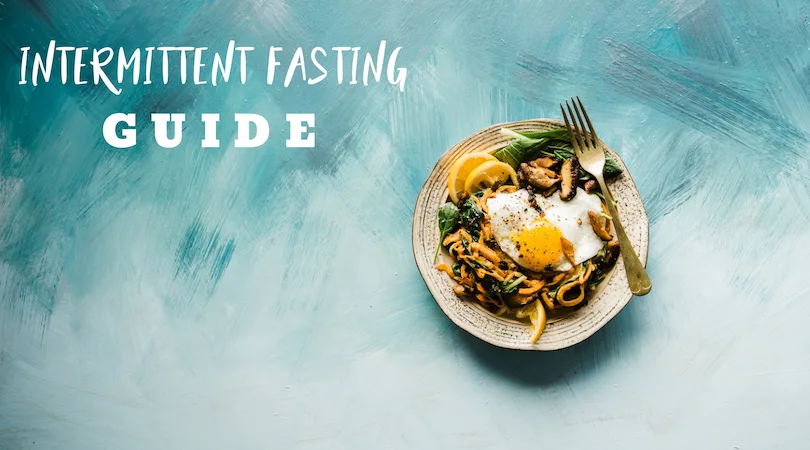
There are many benefits of intermittent fasting. Let’s talk about what it is first.
What is Intermittent Fasting?
You probably know what fasting is - abstaining from eating for a period of time - but what is intermittent fasting and what’s the purpose?
Intermittent fasting is, in short, skipping meals. It’s a bit more complicated than that, but you’re fasting for a certain amount of time and eating for a certain amount of time. Rinse and repeat.
You can drink water, tea, and coffee during your fasting period to help curb hunger. Depending on who you ask, some also say you can eat vegetables and/or small amounts of fruit during your fast - especially when fasting for extended periods of time. However, others will disagree and say fasting means no food. Do what you’re most comfortable with and what helps you achieve your results long term. The worst thing to do is to be too strict and fail before you get to see any results! Set yourself up for success by understanding your body and giving it what it needs.
Why IF?
When your body goes without food for extended periods of time, it turns into a fat burning machine. By eating during only a small window of time during the day, you’ll naturally eat fewer calories. We all know “calories in, calories out” and it’s true! You just have to burn more calories than you take in. One of the best things about intermittent fasting is that you will be fueling your body, so you’ll have plenty of energy to kick your exercise routine up a notch and get the results you want quickly.
Another huge bonus of intermittent fasting is that it’s easy. You aren’t eating 6 small meals a day like with some diets; you aren’t counting calories or points (unless you want to), and it’s super easy to calculate macros when you’re only eating one or two meals. Meal planning isn’t a necessity, and you’re going to be satisfied when you break your fast and eat during that window of time. This means you’ll be less likely to cheat or fall off the wagon. Winning!
Best Times for Intermittent Fasting
One of the first things I searched for when researching was how many hours I’d have to actually go without food. There are several options, so it can get overwhelming rather quickly. You don’t want to starve yourself, obviously, but you need to make sure you’re eating during a specific window of time or it’s not going to give you the results you’re after.
Here are a few of the most popular options for intermittent fasting:
16/8 - Fast for 16 hours, eat for 8. If you’re naturally one who skips breakfast, this is going to be pretty easy for you. Stop eating at 8pm, then start eating again at noon the next day. You can still eat 2 or 3 meals during this 8 hour window, and have enough energy to kill your workout!
20/4 - Fast for 20 hours, eat for 4. Also known as the “Warrior Diet”, fasting for 20 hours and eating for 4 can be extremely effective once you get past the initial hunger stage. During the 20 hour fast, you are allowed to eat vegetables so you won’t be starving by any means, but it can take some getting used to. Read more about the Warrior Diet.
5:2 - Eat normally for 5 days, eat 500 calories for 2 days. For most people, the 5:2 intermittent fasting won’t be too difficult. However, you may find yourself especially fatigued on your low calorie days.
Every other day fasting. This is a somewhat advanced form of intermittent fasting, and isn’t something most would recommend. However, if you’re looking to lose a large amount of weight in a short period of time, it seems effective. On your fasting days, you don’t have to fast completely. You can eat 500 calories or less and still achieve the results you’re looking for. This isn’t recommended as a long term way of eating.
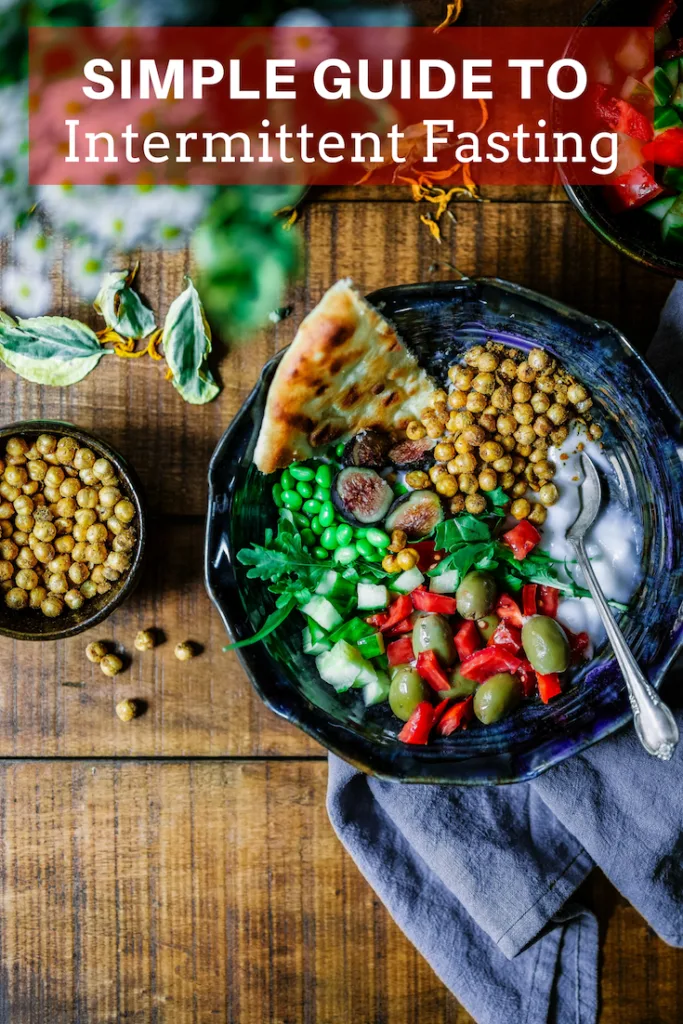
What Intermittent Fasting is NOT
Intermittent fasting is not “pigging out on the most unhealthy foods possible for 8 hours each day and starve for the other 16”. While you can usually get away with a cheat meals here and there with intermittent fasting, the goal is to get healthy while losing weight. Keep that in mind when deciding on what to eat.
What to Eat while doing Intermittent Fasting
You can eat “regular” recipes when you’re doing intermittent fasting, but it’s good to keep protein and carb count in mind. Counting macros is going to be more effective than if you’re just guessing. Keep the protein high and the carbs lower, and you’ll be thrilled with your intermittent fasting results!
Have you ever wondered... does chewing gum break a fast?
Intermittent Fasting Books
Intermittent Fasting for Women
Delay, Don’t Deny: Intermittent Lifestyle
Eat Stop Eat
Complete Guide to Intermittent Fasting
Final Thoughts on IF
Your body, your lifestyle, and your weight loss goals will help you determine which intermittent fasting plan is best for you. At the end of the day, you have to do what works best for your body rather than following the exact plan someone else has said works for them.
Download these free printables to get started.
Printable 1
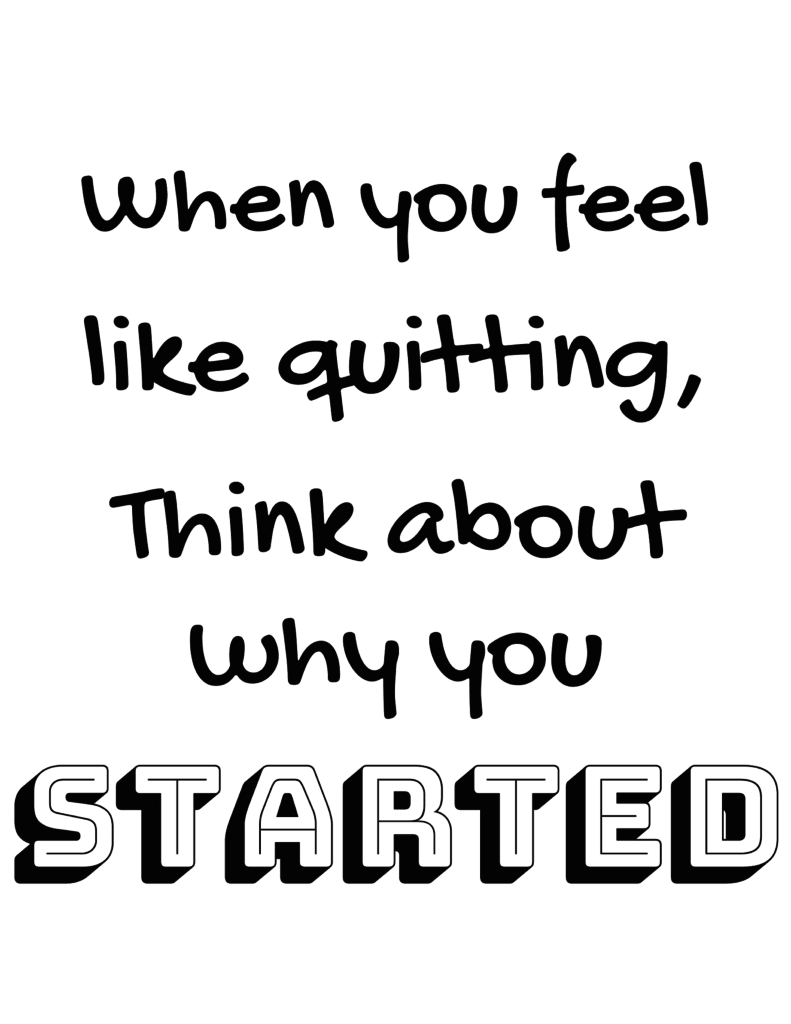
Printable 2
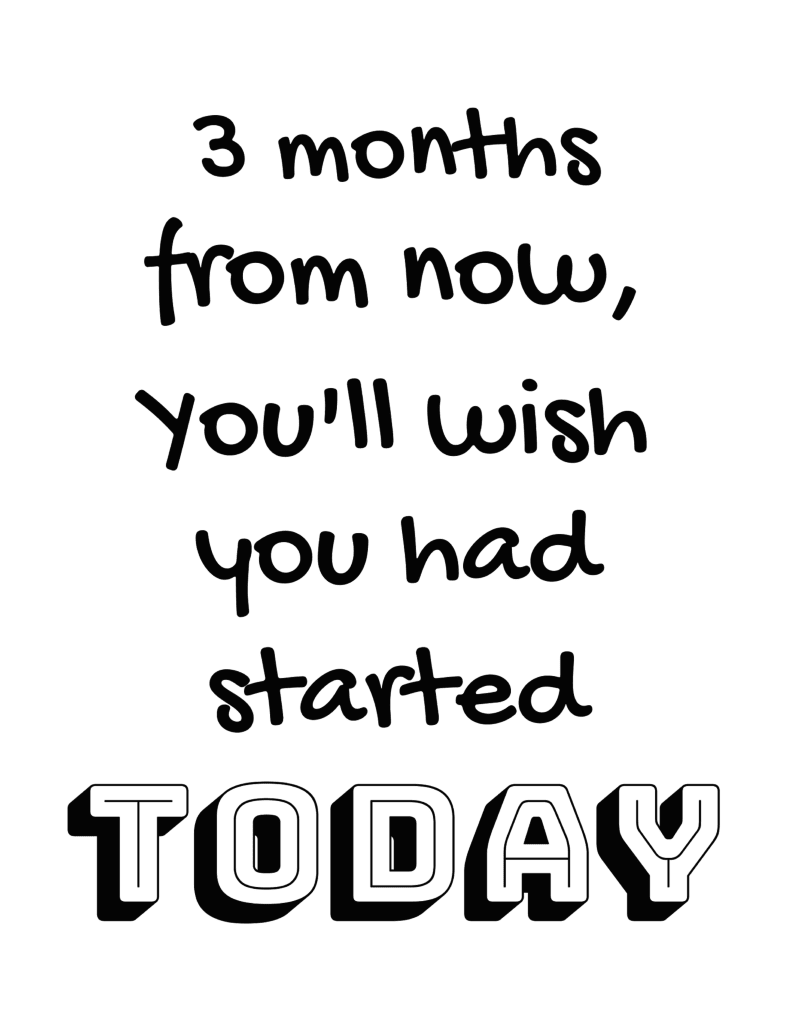
Print this cheat sheet in purple or white:
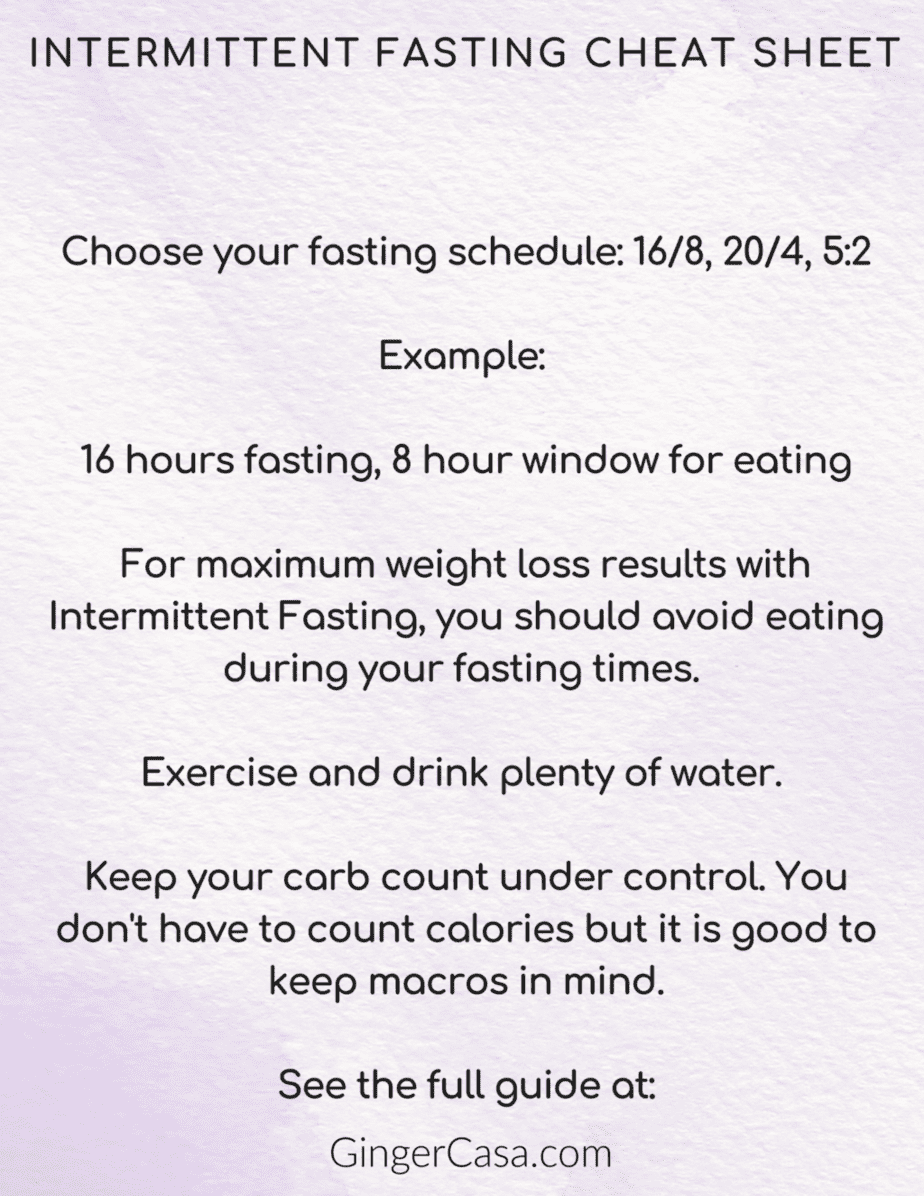
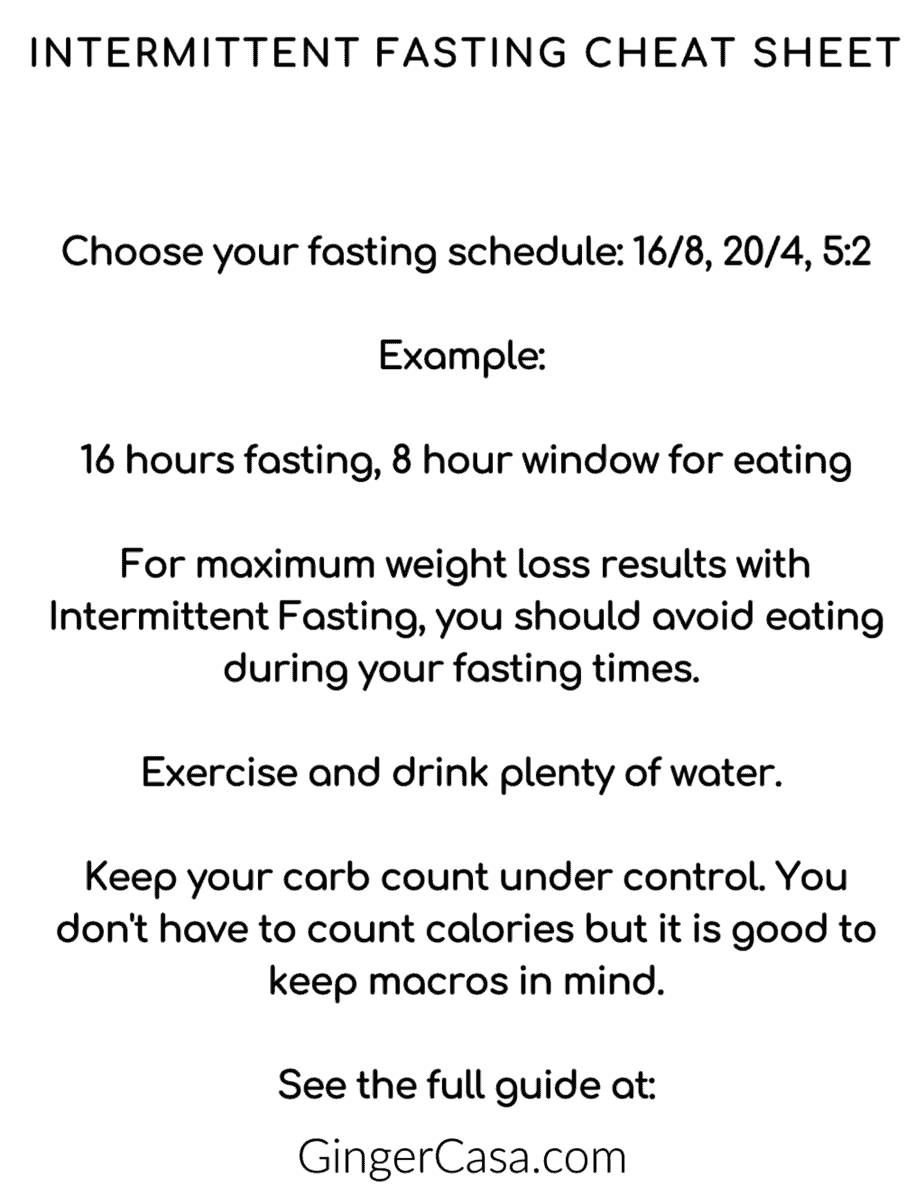

Amanda
Tuesday 31st of October 2023
I find I can do the intermittent fasting if I just cheat a little bit by having some cream in tea late at night. Wondering if it is better to have oat milk, which is high carb, or cream, which is high fat/low carb. Which will have a lesser impact on process my body is going through while fasting? Or am I fooling myself and a cheat is just a cheat??
Gena
Tuesday 31st of October 2023
I think if it works for you and you are continuing to get the results you want then it's fine!
Mary
Wednesday 3rd of November 2021
I started fasting doing 16:8 .I eat at around 9 or 10 am and stop between 3 or 5 pm so far I have lost a few lbs but mostly I see it in the way my clothes fit.Im starting on my treadmill to help lose more weight I hope.
Gena
Friday 5th of November 2021
good job!
watona wells
Wednesday 2nd of September 2020
I prefer 16:8 plan eating 12-8pm. I’m not a big veggie person but I do like to eat raw carrots with ranch dressing green beans and asparagus. What can be drank while fasting?
Gena
Wednesday 2nd of September 2020
I believe the choices are water, black coffee, or tea with no sweetener.